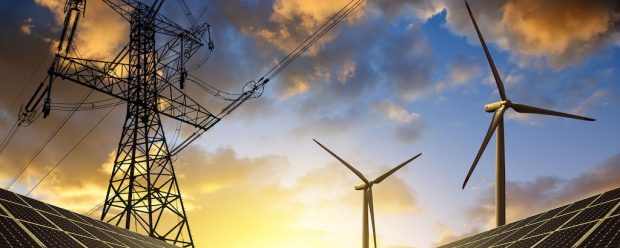In case you were looking to do a deeper dive into the Government’s 10 Point Plan for a Greener Recovery, Atkins has released a new whitepaper that looks at the importance of creating an Energy System Architect (ESA), to coordinate, map out and develop future energy programmes (e.g. the cost and deliverability of CCS, the cost reduction of hydrogen produced from electrolysis, the cost and deliverability of new nuclear including smaller plants).
Chris Ball, Managing Director, Nuclear & Power, UK, Europe and Middle East, at Atkins, commented: “The 10 Point Plan marks a recognition that we must accelerate our progress towards Net Zero. This is most welcome. However, we need a strategy not just to 2030, but for the next 30 years and beyond.
“An ESA must have a holistic view of the long-term goals and strategic direction of the system, supply chain capability, technological development and the relationship between the energy system and other sectors of our society.
“As the coordinating body, the ESA needs to develop a strategic, risk-based implementation plan, and a clear set of risk mitigation options. Any delay in the creation of an ESA to a later date will be detrimental to achieving Net Zero 2050; action is needed now and so the ESA is needed now.”
Without an ESA, Atkins sees the probability of achieving Net Zero 2050 is greatly reduced, and we believe its role should, as a minimum, include:
- Develop a strategic plan for achieving the energy system’s contribution to Net Zero with reference to overall cost effectiveness, system operability, reliability and risk
- Evaluate all potential delivery models including for example the creation of local ‘energy companies’ providing power, hydrogen and heat to a city, and consistency with national plans.
- Hold and maintain the definitive UK energy system model, publishing annual status and projections with full transparency.
- Evaluate strategic risks, develop risk mitigation strategies and alternative scenarios.
- Determine development pathways for each technology with possible upper and lower bounds of deployment.
- Advise on government funded research and development.
- Determine what new capacity and infrastructure is required.
- Advise what market interventions or modifications are required to implement the strategy
Achieving Net Zero by 2050 is an extremely ambitious goal, the risk of failure is high. Our conclusions are simple:
- The nation’s energy supply will become increasingly dependent on electricity and in the digital age the very fabric of society will depend more and more on a stable, secure and reliable power supply.
- The changes in the electricity system are unprecedented, the risks to system stability are greatly magnified as dependency on intermittent renewable generation increases.
- Government’s commitment to achieve Net Zero, based on a theoretical scenario developed by CCC, requires a radical reappraisal of our energy system and development of a strategic plan for Net Zero using a risk-informed systems engineering approach.
- At the strategic level, the ‘competitive energy market’ is defunct. Through a complex web of market interventions, the Government has become the central buyer of electricity. There is no published evidence of a strategic plan guiding government’s exercise of this overwhelming purchasing power.
- In the energy system all the key strategic risks are currently held by BEIS, government always owns failure, in this case the attribution could not be clearer.
- Implementation of Net Zero is a massively complex programme management challenge. Such implementation tasks have historically been separated from policy departments.
- There is a strong case for the creation of an Energy Systems Architect, answerable to parliament for the delivery of the Net Zero commitment.
- Decisions being taken now are impacting our ability to achieve NZ2050 and the reliability of our energy supply in the intervening period.
Here is the new Energy System Architect whitepaper as discussed above for more analysis, but please get in touch for further comments.
[This whitepaper is part of our Engineering Net Zero suite of reports, launched last year with Engineering Net Zero Technical Report.]
Share your industry press now!
Are you a PR agency or sustainability-focused organization? Join the World of Renewables network FREE today and gain exclusive access to our platform to promote your business, share the latest industry news, and connect with a global audience of 700,000+ renewable energy professionals.
Register Now to start posting your updates and showcase your expertise to a highly engaged, environmentally-conscious community.
Find out more about our Content Partnership Programs.*2024 AWARD WINNER* Websites & Mobile Sites, Webby Winner, Peoples Voice 2024













